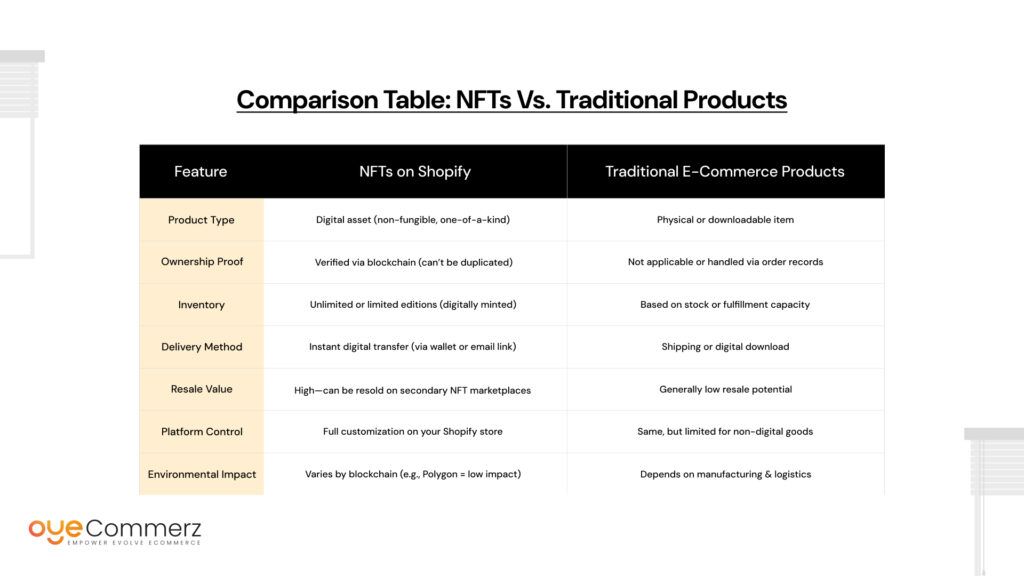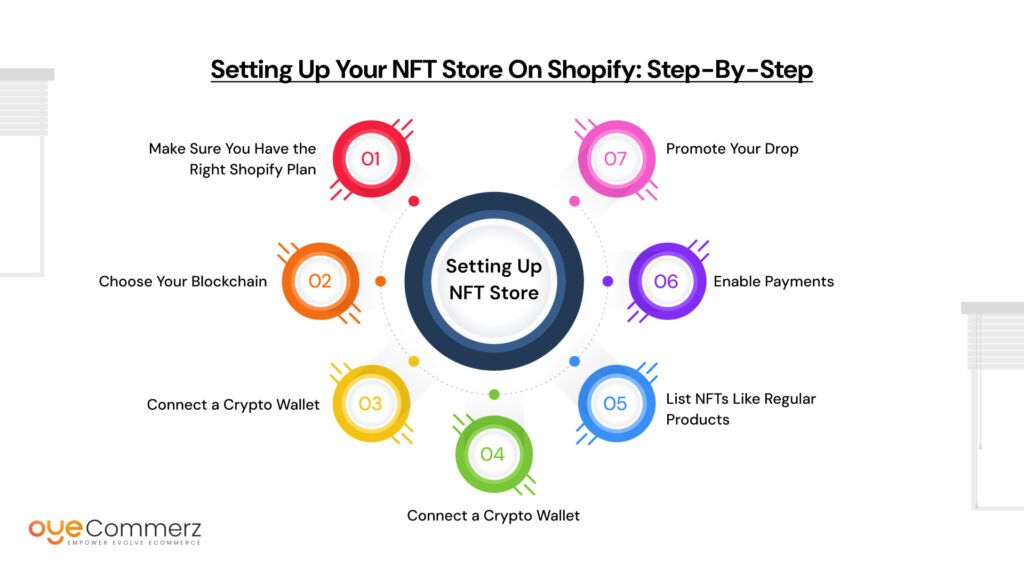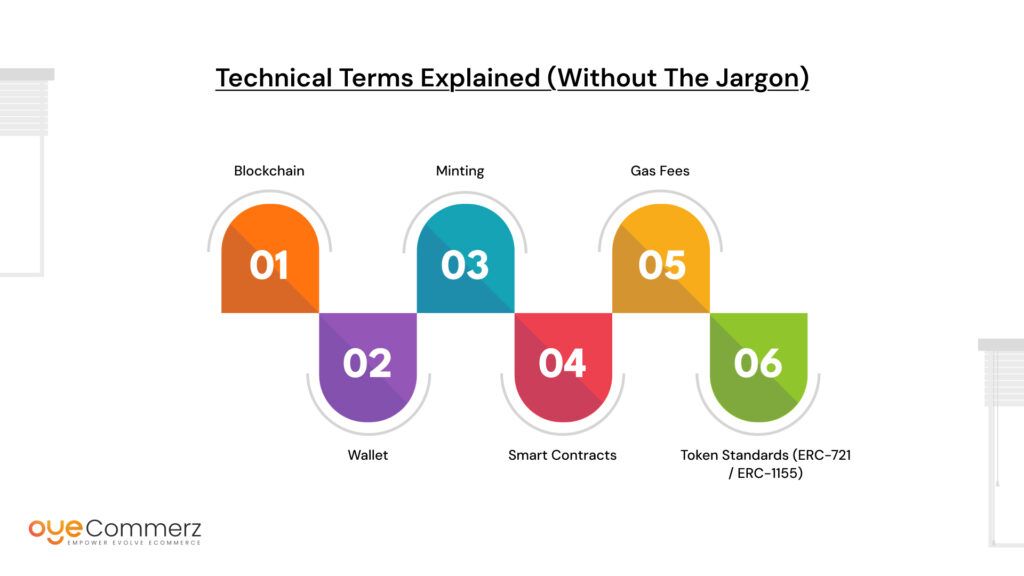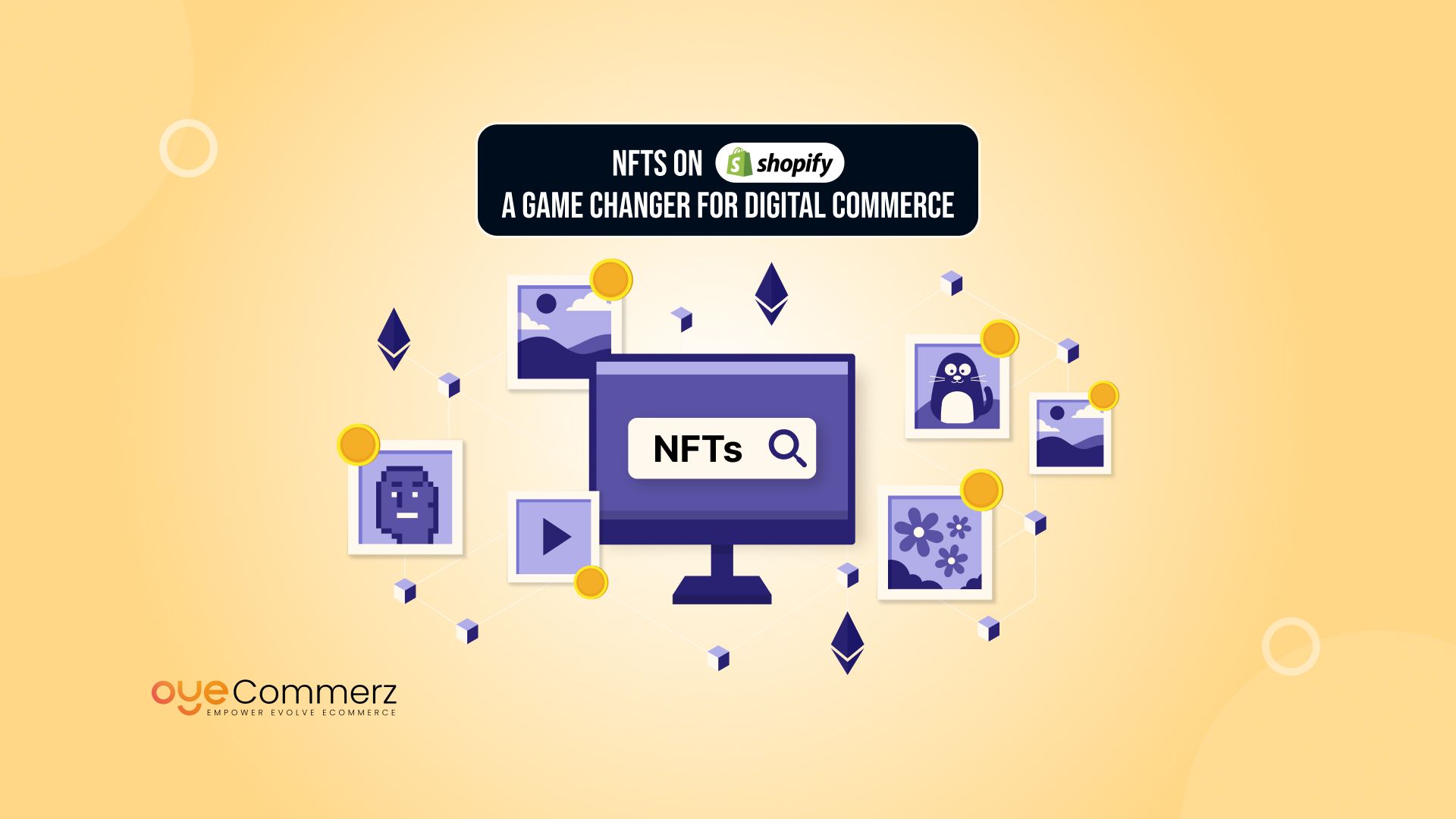The global NFT market surged to $17 billion in 2021, and it’s only growing. As digital ownership reshapes the way we buy and sell online, creators and entrepreneurs are eyeing a powerful new opportunity: NFTs on Shopify.
For many creators, breaking into the NFT space can feel overwhelming. From setting up wallets to choosing a blockchain, launching digital assets often feels like a playground for tech experts—not everyday business owners or artists.
Without the right platform, selling NFTs can be time-consuming, confusing, and costly. Third-party marketplaces like OpenSea offer little control over branding, customer data, or pricing. On top of that, fluctuating gas fees and complex smart contract integrations scare off newcomers.
Enter NFTs on Shopify—a simple, secure, and scalable way to sell digital assets directly from your own store. Whether you’re an artist, musician, startup brand, or influencer, Shopify allows you to offer NFTs just like any physical product—no coding, no chaos, just commerce. Backed by trusted blockchain integrations and a smooth customer experience, Shopify is making NFT selling as mainstream as t-shirts and tote bags.
Table of Contents
ToggleWhat Are NFTs? A Simple Breakdown for Newbies
If you’re new to the world of NFTs on Shopify, let’s start with the basics.
What Is an NFT?
An NFT, or Non-Fungible Token, is a unique digital asset stored on a blockchain—a secure digital ledger. Unlike traditional files you can copy or paste, an NFT proves ownership of a one-of-a-kind item, whether it’s digital art, music, video, collectibles, or even access to real-world experiences.
Think of NFTs Like Digital Collectibles
Imagine owning a signed baseball card or a limited-edition print—NFTs are the digital version of that. Each NFT comes with its own metadata and proof of authenticity, making it impossible to duplicate.
How NFTs Work
- Blockchain: The technology that records transactions and verifies ownership
- Smart Contracts: Self-executing code that controls how NFTs are sold or transferred
- Crypto Wallet: A digital wallet used to store NFTs and cryptocurrencies
Types of NFTs You Can Sell on Shopify
- Digital Art
- Music Tracks or Albums
- Exclusive Video Clips
- Membership Passes
- Access to Private Communities or Content
Whether you’re a digital artist, musician, or brand offering exclusive experiences, NFTs on Shopify open up a world of creative, monetizable possibilities.
Why Sell NFTs on Shopify?
Shopify isn’t just for physical products anymore. With the rise of NFTs on Shopify, creators now have a powerful way to monetize digital assets—without relying on third-party marketplaces or writing a single line of code.
Total Control Over Your Brand
Unlike platforms like OpenSea or Rarible, selling NFTs on Shopify means you’re in full control of the customer journey. From your storefront design to pricing and marketing, you own the experience—and the revenue.
Seamless Shopping Experience for Buyers
Most NFT platforms cater to crypto-savvy audiences. Shopify makes NFT buying feel like any regular e-commerce checkout, even allowing credit card payments (depending on your setup). This reduces buyer friction and expands your customer base beyond just crypto holders.
Built-in Blockchain Integrations
Shopify supports several popular blockchain networks like Ethereum, Polygon, and Flow, enabling you to choose the one that best fits your project. Plus, apps like Venly and Manifold help simplify NFT minting and wallet setup.
Perfect for Artists, Musicians, and Creators
Whether you’re launching a digital art drop, limited-edition music release, or exclusive content membership, NFTs on Shopify make it easier to build hype, capture emails, and create a loyal digital community.
Scalable and Secure
Backed by Shopify’s infrastructure, your NFT store can handle product launches, promotions, and surges in demand with enterprise-grade reliability and PCI-compliant security.
NFTs on Shopify vs. Traditional E-Commerce Products: What’s the Difference?

Selling NFTs on Shopify isn’t just a digital twist on physical goods—it’s a completely different game with new rules, new tools, and exciting opportunities. If you’re used to selling physical products, here’s how NFTs stack up:
Why This Matters for Sellers
If you’re aiming to offer exclusive digital content or create long-term customer value, NFTs on Shopify give you flexibility and earning potential traditional goods can’t match. Plus, there’s no warehouse, no shipping hassles, and no inventory shrinkage.
Setting Up Your NFT Store on Shopify: Step-by-Step

Getting started with NFTs on Shopify may sound technical, but Shopify simplifies the process so even non-developers can launch a store and start selling digital assets with ease. Here’s a step-by-step guide to help you go live:
Step 1: Make Sure You Have the Right Shopify Plan
Currently, NFTs on Shopify are best supported through Shopify Plus or by using approved third-party NFT minting apps like Venly, Manifold, or Nifty Bridge.
✅ Tip: You can still test NFT capabilities on basic plans using public apps with limited features.
Step 2: Choose Your Blockchain
Select a blockchain that fits your goals:
- Ethereum – Most widely used, but gas fees can be high
- Polygon – Eco-friendly and low-cost
- Flow – Ideal for user-friendly experiences and collectibles
Step 3: Connect a Crypto Wallet
To mint and transfer NFTs, you’ll need a wallet like MetaMask or WalletConnect. These are used to handle crypto transactions securely.
🔐 Make sure to back up your seed phrase—it’s the key to your wallet!
Step 4: Use a Shopify App to Mint NFTs
Install a compatible NFT app (like Venly) from the Shopify App Store. These tools handle the minting process, wallet integration, and delivery to your customers.
- Upload your digital file (image, music, video, etc.)
- Set quantity and pricing
- Mint the NFT with one click
Step 5: List NFTs Like Regular Products
Once minted, you can list your NFTs just like any product:
- Add product images and descriptions
- Create urgency with limited drops
- Set up pricing, discounts, and upsells
Step 6: Enable Payments
Allow customers to pay via crypto, credit card, or both—depending on your app and wallet setup. Shopify makes checkout feel familiar, even for buyers new to NFTs.
Step 7: Promote Your Drop
Use Shopify’s built-in marketing tools, email campaigns, or social media integrations to launch your first NFT collection with a bang.
Technical Terms Explained (Without the Jargon)

Jumping into NFTs on Shopify can feel like learning a new language—but it doesn’t have to. Below are some essential terms, broken down so you can feel confident without a tech background.
1. Blockchain
A blockchain is a digital ledger that records transactions in a secure and transparent way. It’s what makes NFTs possible by proving ownership and authenticity of digital assets.
Think of it as a public spreadsheet that no one can alter but everyone can verify.
2. Wallet
A crypto wallet is a digital tool that lets you store, send, and receive cryptocurrencies and NFTs. Popular wallets like MetaMask or WalletConnect are often used with NFTs on Shopify to manage digital assets.
You’ll need one to mint or transfer NFTs.
3. Minting
Minting is the process of creating a new NFT and recording it on the blockchain. Once minted, the NFT becomes a unique digital item with verifiable ownership.
Think of it like publishing a limited-edition digital collectible.
4. Smart Contracts
A smart contract is code written on the blockchain that automatically executes actions (like transferring an NFT when someone pays for it). It ensures the terms of the NFT sale are enforced without needing a middleman.
Behind the scenes, Shopify’s NFT apps handle this for you.
5. Gas Fees
These are small transaction fees paid to blockchain validators to process and secure activity—like minting or transferring NFTs. The cost varies depending on the blockchain (e.g., Ethereum has higher fees than Polygon).
Tip: Choose eco-friendly, low-cost chains like Polygon to keep fees low.
6. Token Standards (ERC-721 / ERC-1155)
These are the rules that define how NFTs are structured and behave on the blockchain.
- ERC-721: One-of-a-kind NFTs (ideal for art or collectibles)
- ERC-1155: Allows batch minting of similar NFTs (great for game items or access passes)
Think of them like different packaging formats for your digital products.
Understanding these basics will make your journey with NFTs on Shopify smoother and less intimidating. You don’t need to master blockchain—you just need to know how to use it to your advantage.
I’m New to E-Commerce — Can I Still Sell NFTs?
If you’re new to e-commerce, don’t worry—selling NFTs on Shopify is simpler than you might think! Shopify is designed to make online selling accessible to anyone, even if you have zero technical experience or prior knowledge of NFTs.
Why Shopify Makes Selling NFTs Easy for Beginners
- No Tech Expertise Needed: Shopify’s user-friendly interface lets you set up your store without coding. You can add and manage NFTs on Shopify just like any physical product.
- All-in-One Platform: Shopify combines storefront setup, payments, inventory, and customer management in one place—keeping things streamlined and organized.
- Simple NFT Integration: With easy-to-use apps like Venly, Manifold, and Nifty Bridge, you can start minting and selling NFTs without needing to worry about the technical details.
What You Don’t Need to Get Started
- No Need to Understand Blockchain in Detail: While it’s useful to know the basics (which we’ve covered in previous sections), you don’t need to be a blockchain expert. Shopify and third-party apps handle the technical side for you.
- No Large Budget: You don’t need a huge investment. Shopify’s plans are scalable, so you can start small and grow at your own pace.
- No Complex Logistics: Unlike physical products that require packaging and shipping, NFTs on Shopify are purely digital, meaning no inventory or fulfillment worries.
Can Non-Creators Sell NFTs?
You don’t have to be an artist to sell NFTs. While NFTs on Shopify are popular among creators of digital art, other types of NFTs are gaining traction too. You can sell:
- Exclusive content like behind-the-scenes videos or early access tickets
- Digital fashion or in-game assets
- Membership passes or event tickets
- Even virtual real estate or collectibles!
Take the First Step Toward Your NFT Store
If you’ve ever dreamed of starting an online business or diving into the NFT space, NFTs on Shopify offers the perfect entry point. With Shopify’s tools and guidance, launching your first NFT collection can be a straightforward, rewarding experience.
Pro Tip: Focus on what you’re passionate about—whether it’s digital art, music, or exclusive access—and start building a community around your NFTs.
Contact to Migrate your Site to Shopify Now
Conclusion
The world of NFTs on Shopify offers endless possibilities for creators, entrepreneurs, and innovators to unlock new revenue streams and engage with their audiences in groundbreaking ways. From offering exclusive digital art and collectibles to creating membership passes or access to limited-time content, Shopify provides a seamless, secure platform to turn your NFT ideas into reality.
As we’ve seen, NFTs on Shopify eliminate the complexities often associated with blockchain technology. Whether you’re a first-time seller or a seasoned entrepreneur, Shopify’s powerful tools and integrations make it easy to mint, market, and sell NFTs—all while maintaining full control over your brand and customer experience.
Ready to Get Started?
If you’re eager to dive into the world of NFTs, remember that Shopify simplifies the process for everyone, no matter your experience level. Whether you’re selling digital art, music, or virtual experiences, there’s never been a better time to start.
And if you’re already on another platform or looking to migrate to Shopify, Oyecommerz specializes in Shopify migration services. They can help you smoothly transition to Shopify, ensuring your NFT store runs efficiently and effectively from day one.
Don’t let tech barriers hold you back. NFTs on Shopify is the future of digital commerce, and the future is now.
Frequently Asked Questions
Yes, you can sell NFTs on Shopify! Shopify allows creators to mint and sell NFTs directly from their online store by using compatible third-party apps like Venly, Manifold, or Nifty Bridge. You can sell digital art, music, virtual assets, and more—all while managing the entire process through Shopify’s easy-to-use platform.
To sell NFTs on Shopify, you need to:
- Choose a Shopify plan (ideally Shopify Plus or use an app with lower-tier plans).
- Set up an NFT minting app such as Venly or Manifold to create your NFTs.
- Integrate a crypto wallet (like MetaMask) for secure transactions.
- List your NFT as a regular product on your store and set up payment options, including crypto or credit cards.
- Promote your store and NFTs through Shopify’s marketing tools.
Absolutely! Selling NFTs on Shopify is easy, even if you’re new to e-commerce. Shopify’s user-friendly interface allows you to set up a store, manage digital products, and even handle payments without technical experience. With apps that simplify minting and wallet integration, you can start selling NFTs right away without any coding or blockchain expertise.
No, you don’t need technical knowledge to sell NFTs on Shopify. Shopify’s third-party apps handle the technical details of blockchain, minting, and wallet integration, allowing you to focus on your creative work and marketing. The setup process is designed to be beginner-friendly, so anyone can get started with NFTs quickly.
Yes! With Shopify, you can sell NFTs on Shopify alongside traditional physical products. This flexibility allows you to offer a mixed shopping experience, where customers can purchase both digital assets (like NFTs) and physical items (such as merchandise). You can manage both product types from the same dashboard for easy store management.




